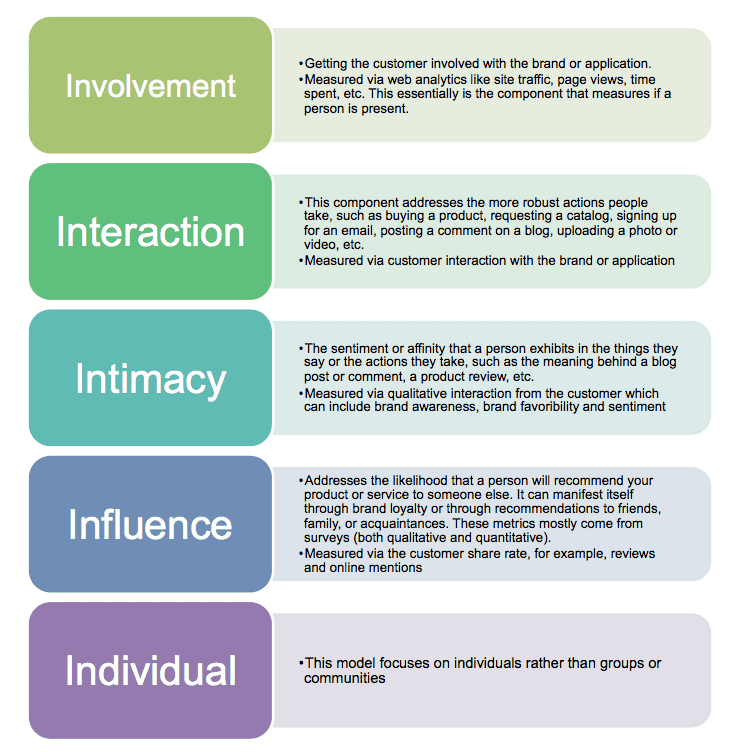The 5Is model from Forrester can help to structure your digital marketing
Forrester is a well-established market research company focusing on business applications of digital technology and media and over the years, the team from Forrester have developed a number of models that we can apply to digital marketing. Occasionally they extract insights from their research and share in the form of a blog article. In 2007 they created a measure of engagement which was termed the 5Is although their focus was on 4 specific elements beginning with the letter ‘i’.
What are the 5Is?
The 5Is stand for the level of involvement, interaction, intimacy, and influence an individual has with a brand over time.
The concept was based on research conducted by Forrester where they concluded that the traditional marketing funnel was dead and they proposed ‘engagement’ as a new metric. Engagement as a term had been discussed by many scholars as far back as 1991 when a team from Western Michigan University shared their research on ‘the experience of flow in computer-mediated and in face-to-face groups’. In this instance, ‘flow’ is about being ‘in the zone’ or being very involved with something.
Applying the 5Is in today's digital landscape
The 5 Is are still a very relevant measure for digital behavior in 2020. For example, the 5 Is are often used to describe behavior in Pinterest users, where they start seeking a specific item and end up spending hours in the social media network, as they delve deeper and deeper into shared items.
Marketers can consider the 5 Is alongside Lauterborn's 4Cs and the Ten Cs of Marketing when auditing their digital marketing strategy.

What to watch for in 2020
Building on previous research, in January 2020 Forrester has published Five Consumer Lessons from the 2010s. In this decade, we have seen the customer 'flow' continue to evolve with customer-centric technology unleashing unprecedented levels of digital intimacy.
Engagement of an audience with an online brand should always be referenced against a timescale. For example, the Smart Insights RACE framework considers short-term interactions in social media which can lead to conversion and longer-term customer engagements.
Free digital marketing plan template
Our popular marketing planning template is structured across the Smart Insights RACE Framework. Join Smart Insights as a Free Member to download our digital marketing plan template today
Access the Free digital marketing plan template









